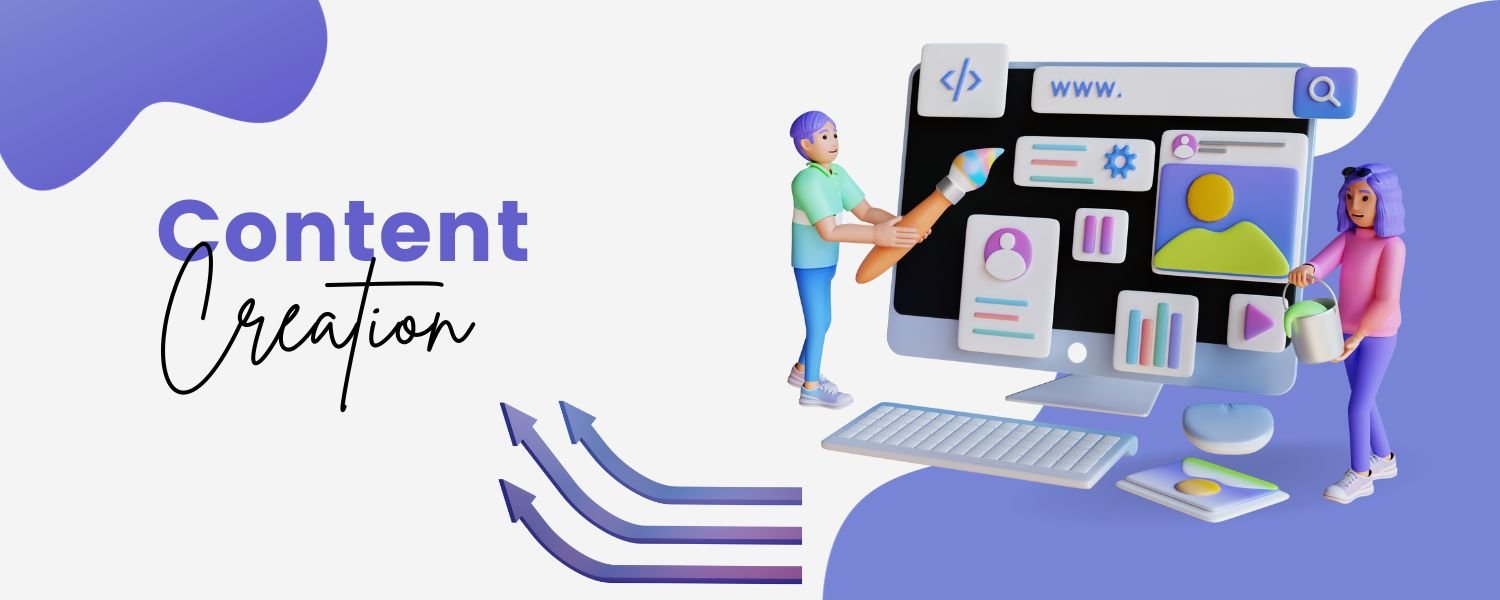Content Marketing : How to Get More Mileage from Your Material
In the ever-evolving digital marketing landscape, crafting captivating content is an art and science combined. It’s the secret ingredient that keeps your audience engaged and coming back for more. To delve into the intricacies of this captivating craft, we turn to the insights offered in the article titled “The Science Behind Captivating Content.
This illuminating resource explores the techniques and strategies that underpin the creation of compelling content, shedding light on the psychology, creativity, and data-driven approaches that will help you captivate your audience effectively.
What is Content Creation?

Content creation refers to the process of generating original and valuable material in various formats, such as articles, videos, infographics, podcasts, and more, with the intent of engaging and informing an audience.
It is a fundamental aspect of content marketing and is crucial for businesses and individuals looking to reach and connect with their target audience. Content creation involves the following key steps:
1. Research
Before creating content, it’s essential to research your target audience, their interests, and pain points. This helps you tailor your content to their needs and preferences.
2. Ideation
Brainstorming and developing ideas for content is a creative process. It involves thinking about topics, angles, and formats that resonate with your audience.
3. Content Production
This step involves creating the actual content. Depending on your chosen format, this could include writing articles, scripting and shooting videos, designing infographics, or recording podcasts.
4. Editing and Proofreading
Ensuring your content is error-free and well-structured is vital. Editing and proofreading help maintain quality and professionalism.
5. Optimization
For online content marketing, search engine optimization (SEO) and other optimization techniques are often used to make sure the content is easily discoverable by your target audience.
6. Publishing
After creating and optimizing content, it’s time to publish it on your website, blog, social media platforms, or other channels.
7. Promotion
Content creation doesn’t end with publishing. Promotion through social media, email marketing, and other channels is crucial to ensure your content reaches its intended audience.
8. Measurement and Analysis
Analyzing the performance of your content is essential to determine its effectiveness. Metrics such as views, engagement, shares, and conversions can provide insights into what’s working and what needs improvement.
Why is Content Creation Important?

Content creation is important for a variety of reasons. Here are some key reasons why content creation is important:
1. Audience Engagement
High-quality content can engage your target audience, providing valuable information, entertainment, or solutions to their problems. This engagement can lead to increased brand awareness, loyalty, and trust.
2. SEO and Visibility
Creating optimized content for search engines (SEO) can improve your website’s visibility in search results. This, in turn, can drive organic traffic to your website and increase your chances of reaching potential customers.
3. Authority and Expertise
By consistently creating content in your niche, you can establish yourself or your brand as an authority and expert. This can build trust with your audience, making them more likely to turn to you for advice or products.
4. Lead Generation
Content can be used to capture leads and build your email list. For example, you can offer downloadable resources, such as ebooks or whitepapers, in exchange for a visitor’s contact information.
5. Education and Informing
Content can educate your audience about your products or services, industry trends, or relevant topics. Informed customers are more likely to make confident purchasing decisions.
6. Branding
Content allows you to convey your brand’s values, personality, and mission. It helps you differentiate your brand from competitors and connect with your target audience personally.
7. Social Sharing and Virality
High-quality content is more likely to be shared on social media and become viral, extending your reach and bringing more people into your brand’s ecosystem.
8. Customer Support
Content can serve as a valuable resource for existing customers. It can answer their questions, address their concerns, and provide support, reducing the strain on your customer service team.
9. Marketing Funnel
Content can be tailored to various stages of the marketing funnel, from raising awareness to converting leads into customers and retaining them.
10. Adaptation to Trends
Content creation allows you to stay updated with industry trends and adapt your messaging and offerings accordingly.
What Does Content Have To Do with Client Engagement?

Content plays a crucial role in client engagement in various ways. Here’s an overview of how content is linked to client engagement.
1. Attracting and Retaining Attention
The link you shared likely discusses how high-quality content can attract and retain the attention of potential clients. Well-crafted content, whether it’s blog posts, videos, social media updates, or any other form, can capture the interest of your target audience.
2. Educating and Informing
Content is a means to educate and inform your clients. When you provide valuable and relevant information through your content, you position yourself as an authority in your field. This, in turn, fosters trust and engagement with your clients.
3. Building Relationships
Content helps in building relationships with clients. By consistently producing content that resonates with their interests and needs, you can establish a rapport with your audience. This can be especially important in content marketing and lead nurturing strategies.
4. Addressing Pain Points
The content you create can address the pain points and challenges your clients face. This can lead to higher engagement because clients are more likely to engage with content that offers solutions or insights relevant to their concerns.
5. Encouraging Interaction
Interactive content, such as surveys, quizzes, or live Q&A sessions, can boost client engagement. The link you shared may discuss how to create interactive content to foster two-way communication with clients.
6. Personalization
Tailoring your content to the specific needs and preferences of your clients can greatly enhance engagement. The link might discuss the importance of personalization in content creation to make clients feel more valued.
7. Driving Conversions
High-quality content often catalyzes conversions. Whether it’s signing up for a newsletter, making a purchase, or any other desired action, engaging content can motivate clients to take the next step in their relationship with your brand.
8. Measuring and Iterating
The link also discusses the significance of analyzing the performance of your content. By tracking metrics such as click-through rates, engagement rates, and conversions, you can gain insights into what works and what needs improvement, allowing you to refine your content strategy for better customer engagement continually.
15 Tips for Writing Engaging Content

Here are 15 tips for writing engaging content:
1. Know Your Audience
Understand your target audience’s preferences, needs, and pain points to create content that resonates with them.
2. Start with a Strong Headline
Craft attention-grabbing headlines that pique curiosity and encourage readers to click on your content.
3. Create Valuable Content
Offer valuable information, insights, or entertainment to your audience. Solve their problems or address their interests.
4. Use Visuals
Incorporate images, videos, infographics, and other visual elements to enhance your content’s appeal and clarity.
5. Keep it Concise
Avoid unnecessary jargon and long-winded sentences. Get to the point and keep your content concise and easily digestible.
6. Tell a Story
Engage your readers with compelling narratives that connect with their emotions and experiences.
7. Use Subheadings
Organize your content with subheadings to improve readability and make it easy for readers to skim and find what they’re looking for.
8. Incorporate Bullet Points and Lists
Bullet points and lists make content scannable and break down complex information into digestible chunks.
9. Show Authority
Back your content with data, statistics, expert quotes, or case studies to establish credibility.
10. Encourage Interaction
Invite readers to leave comments, share their thoughts, or engage with polls and surveys to foster community and discussions.
11. Optimize for SEO
Research and incorporate relevant keywords into your content to improve its search engine visibility and reach a broader audience.
12. Use a Conversational Tone
Write in a conversational and friendly tone that makes readers feel like they’re having a conversation with you.
13. Offer a Clear Call to Action (CTA)
Clearly define the action you want readers to take next, whether it’s subscribing, sharing, or making a purchase.
14. Edit and Proofread
Ensure your content is free of grammatical errors and typos, which can detract from the reader’s experience.
15. Test and Iterate
Analyze the performance of your content and be open to making improvements based on feedback and data.

